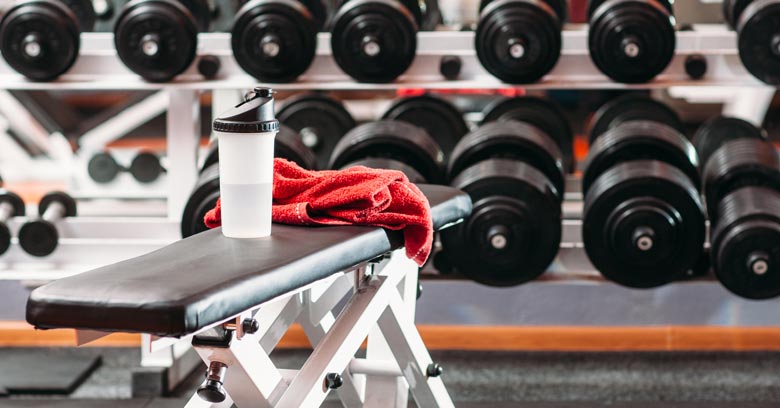
The sports and fitness equipment industry has grown much in recent years as people become more health conscious. The trend is particularly visible in Asia where disposable incomes increase, and consumers are willing to spend more on gym memberships, clothing, and related accessories.
Along with the strong growth, companies simultaneously face difficulties in relying on China as a single sourcing market. Southeast Asia gets more attention as an alternative supply market, something we have covered in our article about manufacturing in Vietnam.
In this article, we review Vietnam as a sourcing market for sports and fitness equipment, explaining both its strengths and weaknesses.
Vietnam’s Sports & Fitness Equipment Manufacturing Industry
The sports and fitness equipment industry includes a wide range of products, sold to both individual consumers and companies. It doesn’t come as a surprise that China is the biggest manufacturer of the products, concentrated in three regions: Guangdong, Shandong, and Zhejiang province.
Here, you have no issues in sourcing weights, barbells, gym accessories, fitness machines, racks, clothes, and footwear. Neither do suppliers rely much on imports of sub-components from overseas.
Despite China’s superior manufacturing capabilities, increasingly more companies seek to diversify sourcing activities to Southeast Asia. The lower labor costs, avoidance of import duties, and supply chain risk management activities drive the trend.
Contrary to China, it’s comparatively complex to identify suppliers for a broad range of product categories as manufacturing is highly specialized. Besides, suppliers sometimes have limited experience in exporting to international markets.
If you plan to source gym and fitness products in Southeast Asia, it’s recommended to start with a market analysis to get a macro view of the most suitable markets. Vietnam, for example, is primarily strong in the clothing and footwear industries. Materials commonly used include textiles, rubber, leather, and PVC.
For commercial gym equipment such as machines and racks, India can be a more suitable option if you seek an alternative supply market to China.
What kind of sports and gym products can be sourced in Vietnam?
As mentioned, Vietnam has an established manufacturing industry for clothing and footwear, the sports line is one of its strengths. Besides, various other equipment and accessories can be produced here with the most common ones listed below.
Sportswear and gear
As a manufacturing hub of garments and textiles, factories supply many international sports brands on a large scale. Thanks to its low labor costs, various free trade agreements, and long experience in the industry, Vietnam has been a preferred destination to produce sportswear, gym equipment, and footwear.
Examples of sportswear that can be manufactured include:
- T-shirts and hoodies
- Running leggings, joggers, and workout pants
- Swimsuits
- Cycling apparel
- Yoga apparel
- Soccer, basketball, and volleyball athlete clothes
The footwear industry contributes much to the domestic export turnover. Running shoes, football shoes, cross trainers, and basketball shoes are just examples of products that are manufactured in large numbers.
International brands like Nike, Adidas, Sketchers, Under Armour, and Decathlon have all set up manufacturing sites for their footwear lines. It’s estimated that more than half of Nike shoes and a third of Under Armour shoes are made in Vietnam, which speaks for itself.
Sports balls
Despite China’s dominance as the biggest producer of sports balls, Vietnam manufacturers can produce soccer balls, baskets balls, futsal balls, and volleyballs. One football ball made by Nike used in the Premier League 2019 is called “Hi-Vis Merlin” and made in Vietnam.
This also speaks for Vietnam’s capabilities of making high-quality products if customers can provide the standards and specifications needed.
Two of the main materials for sports balls are often natural rubber and PVC, both can be found in abundance in Vietnam. Workers are skilled in hand sewing thanks to the established textile industry.
Currently, there are new factories that meet the standard of FIFA for exports. Others are set up by foreign companies and expected to expand production in the future.
What sports and gym products are harder to source in Vietnam?
Our experience shows that apart from garment-related sports products, other sports products can hardly be sourced from Vietnam. You may come across a manufacturer for some equipment, yet you will not have diverse options of capable suppliers.
Some suppliers can meet your production targets, but do not have sufficient export experience or meet global standards. Apart from that, other suppliers have experience in exports but only export directly to holding companies overseas.
Sometimes, the suppliers are not willing to expand production as they cannot compete with Chinese suppliers in terms of prices. Let’s review some of the most popular fitness equipment and sports products that are hard to source in Vietnam.
Weights
Weights include dumbbells, barbells, plates, and kettlebells. The products are generally made from rubber, steel, plastic, cement, and/or cast iron. You can find suppliers of these products in Vietnam, and they mostly use cast iron for dumbbells and weight plates.
With that said, they often don’t specialize in fitness equipment. In most cases, the suppliers produce many kinds of cast iron products, weight plates or dumbbells are just a minor part of the produced categories.
Although you can come across suppliers that produce weights, few focus on exports to international markets. Even gym centers in Vietnam still buy most barbells and kettlebells from overseas.
Fitness machines
Common fitness machines such as treadmills, exercise bikes, rowing machines, and elliptical trainers cannot be sourced in Vietnam. Johnson Health Tech, a fitness brand from Taiwan, is one of a few companies that has chosen Vietnam for manufacturing.
The US and China are primarily producing these kinds of equipment as these are comparably complex to simple weights. Accounting for roughly 60% of the world’s fitness equipment exports, China has factories with ready molds and materials like aluminum, carbon steel, and other metal alloys to produce at diverse price ranges.
Vietnam can produce some simpler equipment for outdoor public exercise or physical education in schools.
If you walk around public parks or condo complexes in Vietnam, you can often notice pull-up bars and iron tools for abs training. However, the equipment is for domestic use only and with low demand in overseas markets.
Gym accessories
Gym accessories include products like Pilates balls, resistance bands, and skipping ropes. There are a few Vietnamese companies that make the products, but they primarily serve the domestic market.
Besides, suppliers tend to avoid producing ODM products with new designs or colors that meet the requirements of foreign buyers. Even if they could do so, it’s hard to compete with Chinese suppliers when it comes to plastic assortments and costs.
While resistance bands have become widely used among gym-goers, Vietnam is not a suitable supply market for the products. Most of the current resistance bands available locally are imported at less competitive prices.
Again, China is dominant in producing these products in large volumes and with both OEM and ODM capabilities.
Import Duties for Sports and Gym Products from Vietnam
To determine the import duties for your products, you first must know the exact HS codes. HS Codes for gym and sports products differ based on materials used so different tax rates apply when imported from Vietnam.
Import Duties to the US
While Vietnam and the US don’t have a free trade agreement, they do have a bilateral trade agreement. As a result, importers can enjoy lower tariffs compared to China. If you are importing to the US, you can check the Harmonized Tariff Schedule to see the HS codes and related duties.
Import Duties to the EU
The free trade agreement between the EU and Vietnam – EVFTA has come into effect and helped to reduce the tariffs for imports. However, depending on the products, the rate reductions vary.
For example, Women’s or girls’ swimwear (excluding knitted or crocheted) has the HS code 62111200 and with a tariff of 0% when imported from Vietnam. The same tax rate is also applied for inflatable balls used in sports.
More detailed guidelines and full tariff information for countries member of EVFTA can be found here.
Summary
The sports and gym industry has grown rapidly in recent years as people become more health-conscious and are willing to spend more on the products. Brands like Gymshark and Under Armour have seen great success in selling their products in the US and Europe, but also in Asia.
While Vietnam has become a favorable supply market for a variety of products, only a handful of sports and gym products can be found here. These primarily include garments, footwear, but also weights. Fitness machines, including treadmills and step machines, are harder to source as these are primarily produced in China and the US.
Even if Vietnam has favorable trade agreements with both the US and the EU, you’ll not be able to find more advanced equipment here. That also includes Pilates balls, skipping ropes, and resistance bands.
If your primary goal is to find suppliers outside of China, you should start with a macro perspective and find suitable markets for the products first.
Read more about our market entry services or other consulting capabilities.
The insights provided in this article are for general informational purposes only and do not constitute financial advice. We do not warrant the reliability, suitability, or correctness of the content. Readers are advised to conduct independent research and consult with a qualified financial advisor before making any investment decisions. Investing in financial markets carries risks, including the risk of loss of principal. Past performance does not guarantee future results.
The views expressed herein are those of the author(s) and do not necessarily reflect the company's official policy. We disclaim any liability for any loss or damage arising from the use of or reliance on this article or its content. ARC Group relies on reliable sources, data, and individuals for its analysis, but accuracy cannot be guaranteed. Forward-looking information is based on subjective judgments about the future and should be used cautiously. We cannot guarantee the fulfillment of forecasts and forward-looking estimates. Any investment decisions based on our information should be independently made by the investor.
Readers are encouraged to assess their financial situation, risk tolerance, and investment objectives before making any financial decisions, seeking professional advice as needed.



